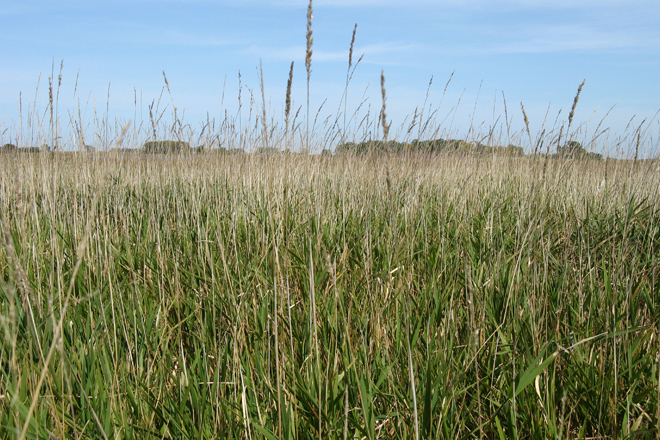Five of America's largest conservation groups came together to pen an important message to the country
Over the past few years, natural resource conservation — from restoring our national parks to conserving critical wildlife habitat — has provided rare common ground and bipartisan victories.
The bipartisanship of conservation must be summoned once again to restore America’s most endangered ecosystems — our prairies and grasslands. The challenges facing the Great Plains are steep and demand collaborative solutions. Only fragments of our once vast prairies remain supporting the wildlife that captured the imaginations of early Americans. The grazing lands that have sustained generations of ranchers are dwindling and species from pronghorn and elk to teal and pheasants are struggling to navigate places they used to call home.
On behalf of five of America’s largest conservation organizations and our millions of members, we call for bipartisan solutions to the crisis facing our native grasslands, including passage of a new North American Grasslands Conservation Act. This would invest in conserving and restoring our native grasslands for ranchers, wildlife, and future generations.
Consider, first, that 73 percent of America’s tallgrass, mixed grass, and shortgrass prairies
have vanished, along with their ecological benefits and many iconic species.
Total grassland bird populations have declined by more than 40 percent since 1966, and some species, like the lesser prairie chicken, teeter at the edge of extinction. Species that had been economically significant throughout American history, like the bobwhite quail, have seen declines of nearly 85 percent in the last half century.
Exacerbating the problem is the steep reduction of acres in the Conservation Reserve Program (CRP), which is America’s most successful private lands conservation program based on grassland acres. Over the last thirteen years, we have seen a precipitous drop in
CRP enrollment from 36.7 million acres in 2007 to
21.9 million acres today; a decline which has negatively impacted wildlife populations, soil health, and rural communities.
The good news is that a number of our leaders are coming around to the idea that we can do more than reverse these losses — we can also rely on these critical landscapes to address climate change, support stronger fish and wildlife, and restore waterways.
Policymakers should act now to support working grasslands and help stem the tide of habitat loss, fragmentation, and degradation. That includes ensuring that the Conservation Reserve Program is fully enrolled and providing sufficient incentives to make it worthwhile for landowners.
But we also need our leaders to think bigger. We need a national grasslands strategy to conserve and restore native grasses and prevent further losses. Our current tools are not enough.

For wildlife — and especially waterfowl, which rely on places like the Prairie Pothole Region of the northern plains often called America’s “duck factory” — the benefits of a new grasslands policy are clear. But protecting and restoring America’s prairies and grasslands can do more than boost habitat: No other ecosystem on the planet has the same capability to sequester carbon and reduce the impacts of climate change.
Earlier this year, a group of wildlife and sportsmen’s organizations endorsed grasslands restoration as a main tenet of any comprehensive climate strategy—and we’re encouraging the incoming Biden administration to do the same. Grasslands enrolled in the Conservation Reserve Program already sequester an average of 49 million tons of greenhouse gases annually (equivalent of taking 9 million cars off the road each year), while reducing flooding and erosion during extreme weather events.
By enacting a North American Grasslands Conservation Act we will keep working grasslands working by providing voluntary technical and financial assistance. This will kickstart the protection and restoration of our continent’s most imperiled ecosystem, while contributing to ranching livelihoods and wildlife abundance.
When Lewis and Clark crossed the Mississippi River in 1804, they encountered a region teeming with wildlife that was aptly named, “America’s Eden.” This territory still has remnants of abundant wildlife among its remaining strongholds of tallgrass, mixed grass and shortgrass prairie, but they are quickly fading.
If we are to maintain or expand these precious resources for the future, the time has come to forge bipartisan solutions that will restore America’s grasslands and help revitalize rural communities.
This piece was originally published on The Hill, submitted by: Howard K. Vincent, President and CEO, Pheasants Forever & Quail Forever; Collin O’Mara, President and CEO, National Wildlife Federation; Rebecca A. Humphries, CEO, National Wild Turkey Federation; Jeff Crane, President, Congressional Sportsmen's Foundation; and Whit Fosburgh, President and CEO, Theodore Roosevelt Conservation Partnership